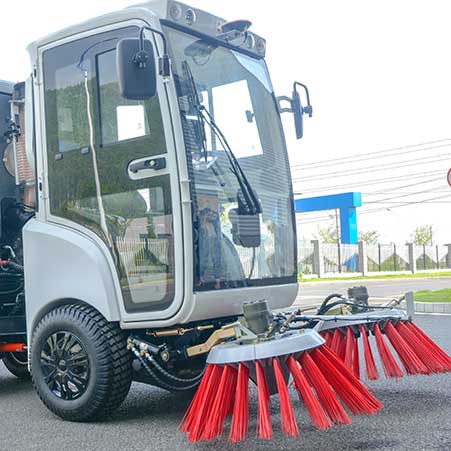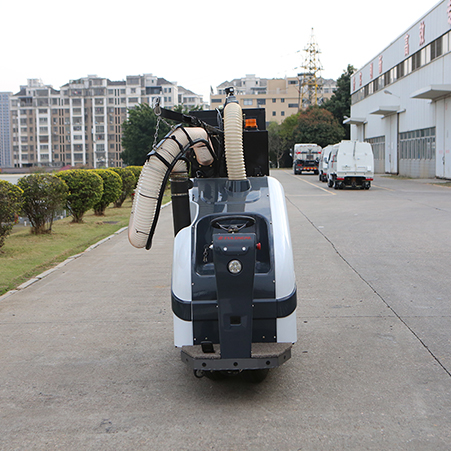Imagine you’re sipping your morning coffee, gazing out the window at the early light of dawn, when you hear the soft hum of machinery. You look out to see a road sweeper truck gliding down your street, its brushes spinning like clockwork, leaving a trail of cleanliness in its wake. Have you ever wondered how these fascinating machines work?
History and Evolution
The journey of road sweeper trucks began in the late 19th century with horse-drawn brooms manually operated by street cleaners. As cities grew, the demand for efficient street cleaning spurred technological advancements. The early 20th century saw the advent of motorized sweepers, which significantly improved efficiency. Over the decades, these machines evolved, incorporating new technologies like vacuum systems and regenerative air mechanisms, transforming into the sophisticated road sweepers we see today.
Types of Road Sweeper Trucks
Mechanical Sweepers
Mechanical sweepers are the traditional workhorses of the street-cleaning world. They use rotating brushes to sweep debris into a collection hopper. These sweepers are especially effective at handling heavy debris like gravel and leaves. Their robust construction and straightforward mechanics make them reliable and easy to maintain.

Vacuum Sweepers
Vacuum sweepers operate much like a giant vacuum cleaner, using powerful suction to pull debris off the street and into a hopper. This type of sweeper is particularly effective for picking up fine dust and small particles, making it ideal for urban environments where air quality is a concern.

Regenerative Air Sweepers
Regenerative air sweepers combine the principles of mechanical and vacuum sweepers. They use a closed-loop air system to blast air onto the street surface, dislodging debris, which is then vacuumed into a hopper. This method is highly efficient, reducing dust emissions and conserving water, making regenerative air sweepers a popular choice in modern street-cleaning operations.

Comparative Analysis
Mechanical sweepers excel in handling large debris and are cost-effective, but they may struggle with fine dust. Vacuum sweepers are excellent for fine particles but can be less effective with larger debris. Regenerative air sweepers offer a balanced approach, effectively handling both large and small debris with minimal environmental impact. Choosing the right type depends on specific needs and operating environments.
Core Components and Functions
Chassis and Frame
The chassis and frame are the backbone of a road sweeper truck, providing structural support and housing essential components. A robust chassis ensures durability and stability, essential for the demanding tasks these machines perform.
Sweeping Mechanism
The sweeping mechanism consists of rotating brushes or brooms that agitate debris on the street surface. The brushes are strategically placed to guide the debris towards the center of the truck, where it is collected by the primary pick-up mechanism.
Vacuum System
In vacuum sweepers and regenerative air sweepers, the vacuum system generates powerful suction to lift debris from the street into the collection hopper. The system includes fans, air ducts, and filters to manage airflow and capture fine particles.
Water System
The water system plays a crucial role in dust suppression. Water is sprayed onto the street to moisten dust particles, preventing them from becoming airborne. This system includes water tanks, pumps, and spray nozzles, ensuring effective dust control during sweeping operations.
Hopper and Debris Collection
The hopper is the storage container for collected debris. It is designed to maximize storage capacity and facilitate easy dumping of waste. Modern hoppers are equipped with mechanisms to compact debris, increasing the amount of waste that can be collected before needing to be emptied.
Control Systems
Advanced control systems allow operators to manage sweeping functions efficiently. These systems include controls for brush speed, water spray, and vacuum power. Some modern sweepers feature automated controls and diagnostic systems to optimize performance and simplify maintenance.
Conclusion
Exploring the mechanics of road sweeper trucks reveals a fascinating blend of engineering and innovation. These machines, often taken for granted, play a vital role in maintaining clean and healthy urban environments. As technology continues to advance, we can expect even more efficient and environmentally friendly road sweeper trucks in the future.
FAQs
How often should road sweeper trucks be serviced?
Regular servicing is recommended every 200-300 operating hours, but this can vary depending on usage and manufacturer guidelines.
Can road sweepers handle all types of debris?
While road sweepers can handle a wide range of debris, including leaves, gravel, and dust, very large objects or hazardous materials may require special handling.
Are electric road sweepers as effective as diesel-powered ones?
Yes, modern electric road sweepers are designed to be just as effective as their diesel counterparts, with the added benefits of reduced emissions and noise.
What is the lifespan of a road sweeper truck?
With proper maintenance, a road sweeper truck can last between 8 to 12 years, though this can vary based on usage and operating conditions.
How do autonomous road sweepers navigate?
Autonomous road sweepers use advanced sensors, GPS, and machine learning algorithms to navigate and perform sweeping tasks without human intervention.






